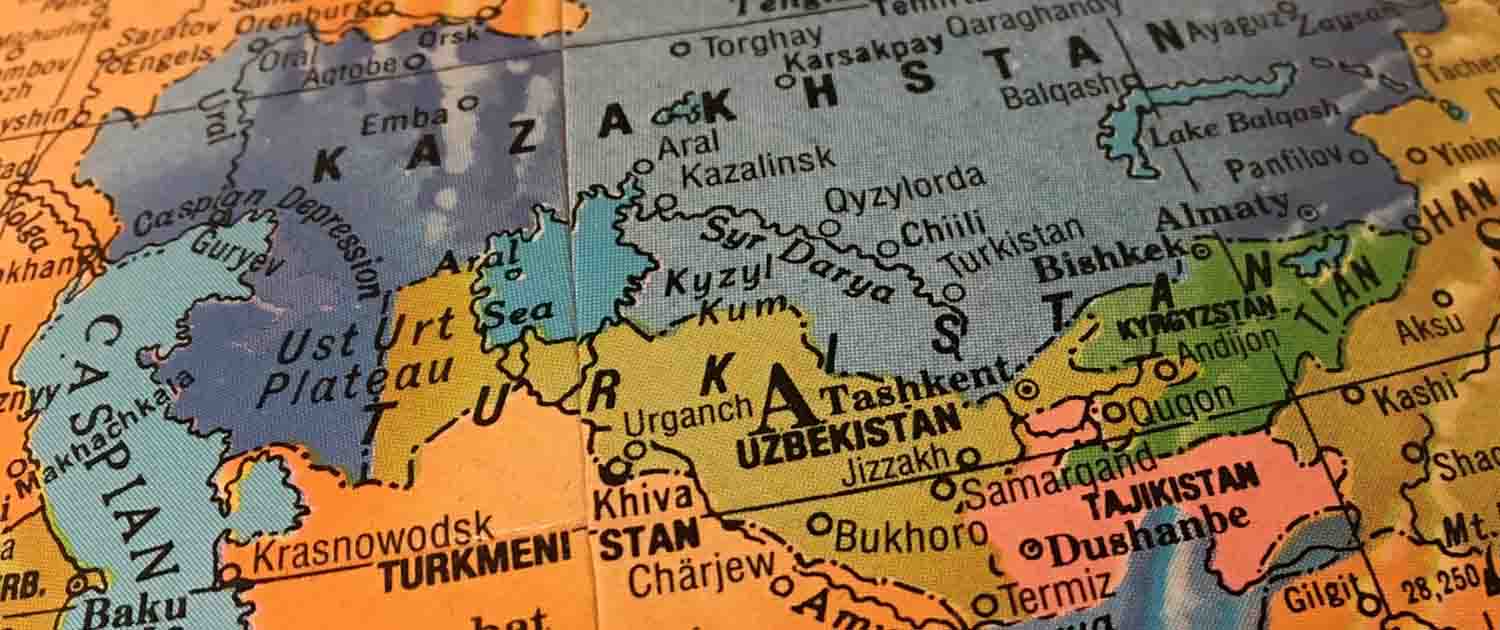Central Asia has historically played an important role in connecting the world. Comprising Kazakhstan, Kyrgyzstan, Tajikistan, Turkmenistan, and Uzbekistan, the region is home to around 80 million people from diverse cultures, religions, languages, and economic backgrounds.
While the Caspian Sea borders some of these countries, it and the region are landlocked. This means all the region’s Internet connectivity is provided by terrestrial fiber from neighboring countries Afghanistan, China, Iran, and Russia.
Given the questionable current and future status of the Internet in three of these four countries, Central Asia has quickly become an isolated road to nowhere and an equally important bastion to uphold the merits of an open, globally connected, secure, and trustworthy Internet.
This makes understanding the current resilience of the Internet in the region more important than ever. This will allow us to measure the impact of developments surrounding this region and guide further research and resources on how best to develop the Internet within it.
To this end, the Internet Society has recently drafted a report examining the resilience profile of each country in the region, using open data sources, most of which are collated and presented in Internet Society Pulse.
Read the Pulse report: Internet Resilience and Efficiency in Central Asia [PDF 1.1M]
Below are some of the key takeaways and recommendations from the report.
Central Asia Ranks Lowest for Resilience in Asia
Central Asia’s overall IRI score of 39% (Figure 1) is well below the overall average for Asia (46%) and the lowest of its neighboring sub-regions: Southern Asia (43%), Western Asia (47%), Eastern Asia (49%) and South-Eastern Asia (49%).

Looking at each country in the sub-region (Figure 2), we can see a wide range of resilience, from 49% in Kazakhstan to 29% in Turkmenistan.

Terrestrial Cable Infrastructure is Critical for Connectivity
Not having direct access to submarine cables means Central Asian countries heavily rely on terrestrial cables, which often traverse long distances across multiple borders, some of which have questionable long-term resilience. This increases the potential for higher latency and additional costs associated with securing transit agreements. These factors combined can deter widespread Internet use and slow digital development.
Of the five countries in the region, Kazakhstan has the most mature and robust terrestrial network. It has several interconnections with Russia and at least one cross-border terrestrial link with China, Kyrgyzstan, Turkmenistan, and Uzbekistan. Turkmenistan and Uzbekistan have the least terrestrial connectivity.
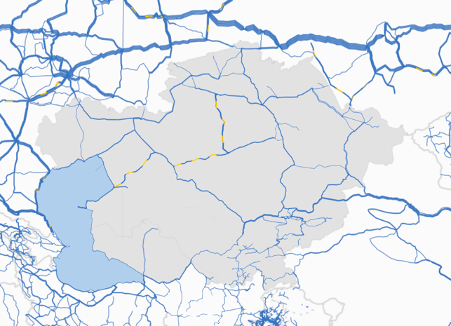
Low-earth Orbit (LEO), Medium-Earth Orbit (MEO), and Geostationary Orbit (GEO) Internet satellite services such as HughesNet, Intelsat, O3b, OneWeb, Project Kuiper, and Starlink continue to increase availability in Central Asia. Though licenses have not been granted in all countries, satellite connectivity presents an alternative to fiber connectivity in the region, especially as prices continue to fall, though should be seen more so for redundancy reasons, with emphasis more on local infrastructure.
Read: Mapping Terrestrial Fibre Optic Networks is Essential for Measuring Internet Resilience
Majority of Content is Served Externally
A new feature we are working to include in Pulse seeks to measure how much of a country’s traffic is served by hosts in the country versus hosts in another country. Hosting content as close to a user lowers the time it takes for them to access that content and can also help alleviate the impact of international connection outages.
Of the five countries in the region, Kazakhstan is serving the greatest percentage (>50%) of its 1,000 most popular websites locally (blue), with Cloudflare providing most of these websites (Figure 4).
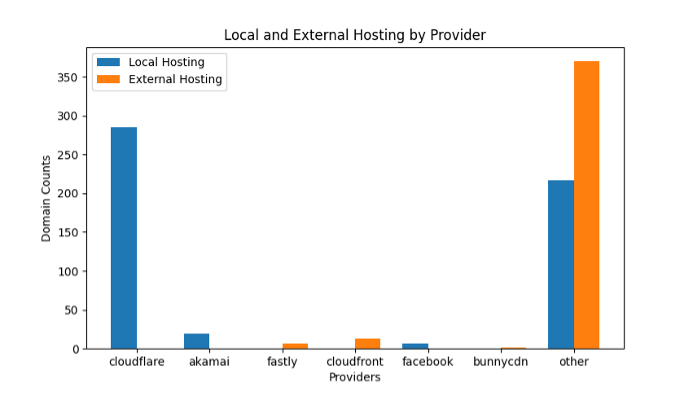
Between 10 to 25% of similar traffic is served locally in the other countries in the region.
Learn about the Internet Society’s efforts to keep half of all traffic local in selected economies by 2025
Countries With Fewer Networks Have Greater Routing Security
Adopting routing security frameworks, such as Resource Public Key Infrastructure (RPKI), Route Origin Authorizations (ROA), and Route Origin Validation (ROV), are essential for preventing routing incidents such as hijacking or leaks and ensuring that only authorized and validated routes are used within the network.
We monitor network operators’ route validation adoption on Pulse using RoVista data. Their measurement technique provides us with two insights: the percentage of networks that benefit from complete protection of their routes and the percentage of networks that benefit from partial protection. This latter category may be network operators that, while they do not perform route validation themselves, get connectivity from networks that do and thereby gain some security benefit from that validation.
In 2023, partially protected networks nearly doubled from 44% to 81%, while fully protected networks saw a similar growth rate, going from 9% to 18% (Figure 5).
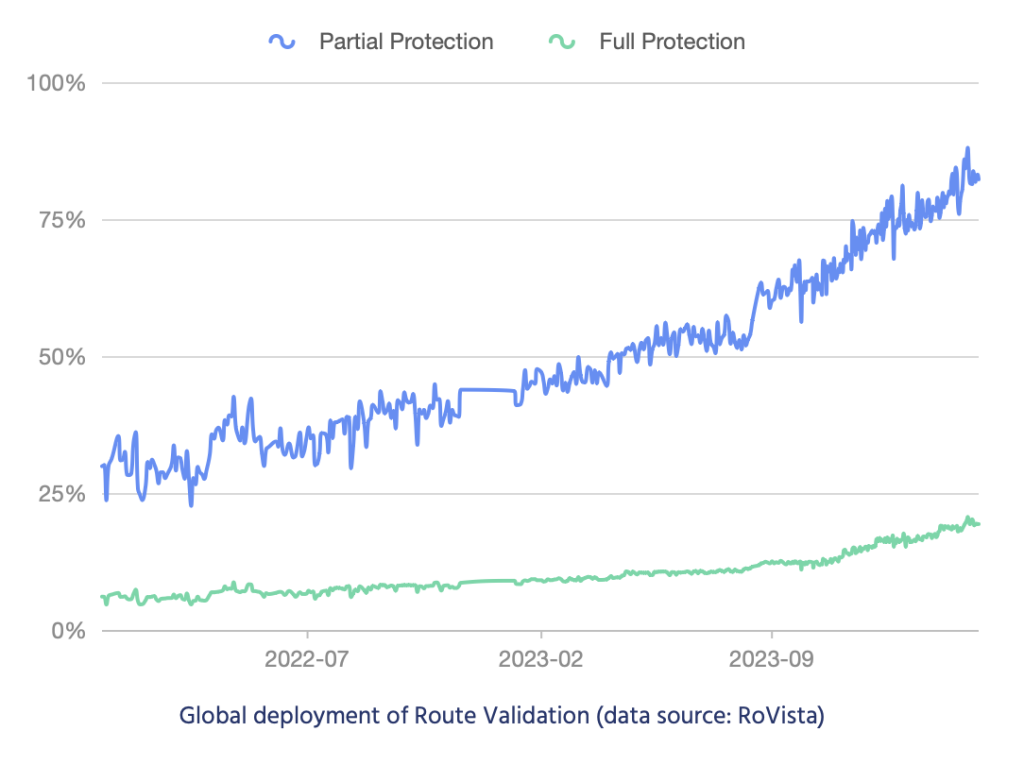
Despite its low overall resilience, Turkmenistan has the highest rate of Route Validation adoption at 94% (Figure 6). All other countries have less than 2% adoption.
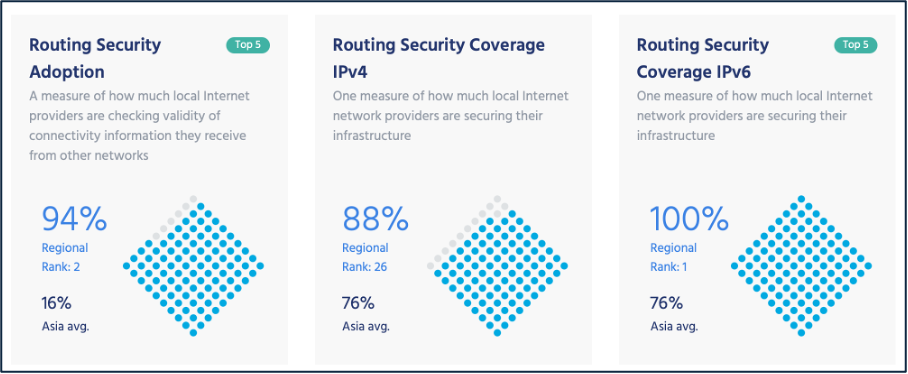
This adoption rate isn’t uncommon among countries that have few assigned networks (Autonomous System Networks, or ASNs for short). According to RIPEstat, Turkmenistan has five active ASNs in the global routing table, while Kazakhstan has 135 active ASNs.
Learn how Mutually Agreed Norms for Routing Security (MANRS) is working to increase adoption of routing security best practices
Recommendations
It’s challenging to identify any single factor that could enhance the resilience of infrastructure (and reduce the cost of Internet services) in any country or region.
Instead, multiple strategies need to be considered, including:
- Local Traffic Sharing: This is only possible by establishing a comprehensive network of Internet Exchange Points (IXPs) throughout each country in the region.
- Cross-Border Data Sharing: Transparent and inclusive policies for cross-border data sharing can potentially reduce transit costs and improve the resilience and speed of connections.
- Encouraging Local Data Hosting: This reduces the reliance on international bandwidth and decreases costs while improving access speeds.
- Building Local Content and Infrastructure: This infrastructure can include data centers, cloud services, and content delivery networks that are physically closer to the region’s users, thus enhancing the overall user experience and fostering the digital economy.
- Government and Regulatory Support: Policies that encourage investment in telecommunications infrastructure, support the establishment and operation of IXPs, and incentivize local data hosting can significantly increase the resiliency of the country’s infrastructure and drive down costs for providing essential Internet services.
Ultimately, more investment in locally hosted content and Internet service infrastructure in Central Asia will help mitigate the challenges it currently and potentially faces as its neighboring countries disassociate themselves from the global Internet.
Read the Pulse report: Internet Resilience and Efficiency in Central Asia [PDF 1.1M]
Photo by David Mulder via Flickr

